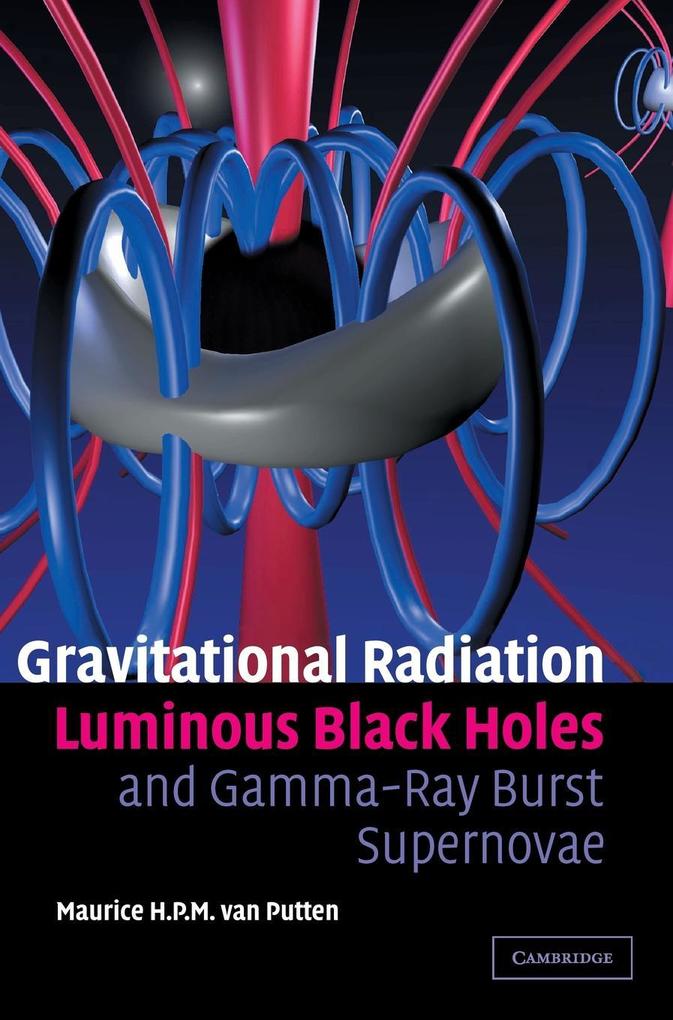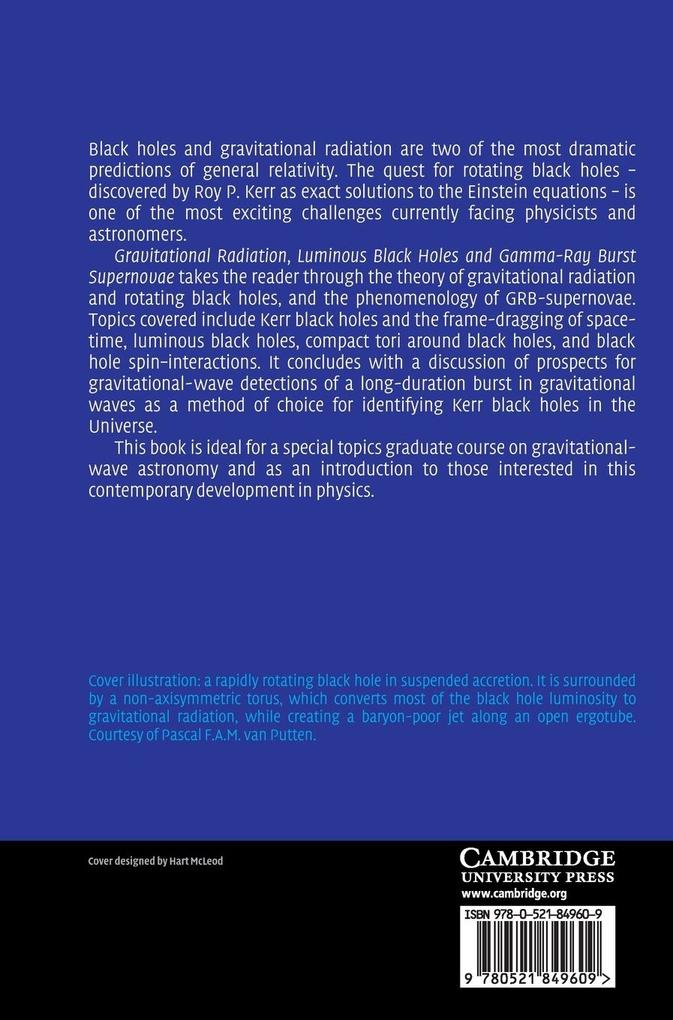
Zustellung: Do, 17.07. - Mo, 21.07.
Versand in 7 Tagen
VersandkostenfreiBlack holes and gravitational radiation are two of the most dramatic predictions of general relativity. The quest for rotating black holes - discovered by Roy P. Kerr as exact solutions to the Einstein equations - is one of the most exciting challenges currently facing physicists and astronomers. Gravitational Radiation, Luminous Black Holes and Gamma-Ray Burst Supernovae takes the reader through the theory of gravitational radiation and rotating black holes, and the phenomenology of GRB-supernovae. Topics covered include Kerr black holes and the frame-dragging of spacetime, luminous black holes, compact tori around black holes, and black-hole spin interactions. It concludes with a discussion of prospects for gravitational-wave detections of a long-duration burst in gravitational-waves as a method of choice for identifying Kerr black holes in the Universe. This book is ideal for a special topics graduate course on gravitational-wave astronomy and as an introduction to those interested in this contemporary development in physics.
Inhaltsverzeichnis
Foreword; Introduction; Acknowledgements; Notation; 1. Superluminal motion in the quasar 3C273; 2. Curved spacetime and SgrA*; 3. Parallel transport and isometry of tangent bundles; 4. Maxwell's equations; 5. Riemannian curvature; 6. Gravitational radiation; 7. Cosmological event rates; 8. Compressible fluid dynamics; 9. Waves in relativistic magnetohydrodynamics; 10. Nonaxisymmetric waves in a torus; 11. Phenomenology of GRB supernovae; 12. Kerr black holes; 13. Luminous black holes; 14. A luminous torus in gravitational radiation; 15. GRB supernovae from rotating black holes; 16. Observational opportunities for LIGO and VIRGO; 17. Epilogue: GRB/XRF singlets, doublets? Triplets!; Appendices; References; Index.
Produktdetails
Erscheinungsdatum
13. Juni 2016
Sprache
englisch
Seitenanzahl
328
Autor/Autorin
Maurice H. P. M. van Putten
Verlag/Hersteller
Produktart
gebunden
Gewicht
747 g
Größe (L/B/H)
250/175/22 mm
ISBN
9780521849609
Entdecken Sie mehr
Bewertungen
0 Bewertungen
Es wurden noch keine Bewertungen abgegeben. Schreiben Sie die erste Bewertung zu "Gravitational Radiation, Luminous Black Holes and Gamma-Ray Burst Supernovae" und helfen Sie damit anderen bei der Kaufentscheidung.








